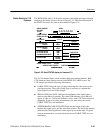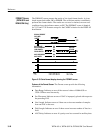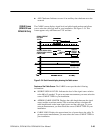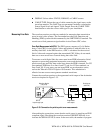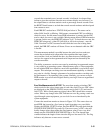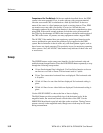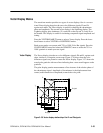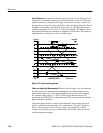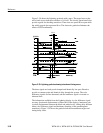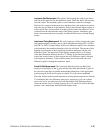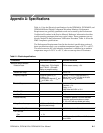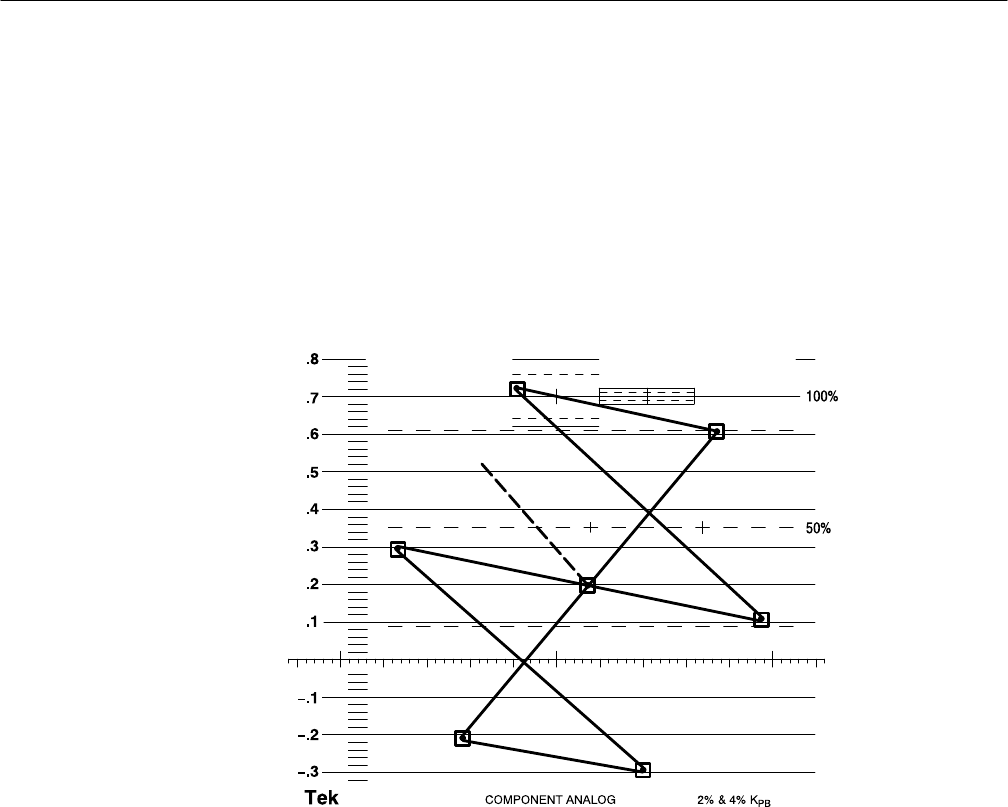
Reference
3–54
WFM 601A, WFM 601E & WFM 601M User Manual
Vector Graticule. The waveform monitor Vector graticule, shown in Figure 3–37,
operates as a component vectorscope. Each chrominance vector of a Color Bar
signal terminates as a bright dot in a target. The distance from the center box to
the target box corresponds to the amplitude for the color being measured. The dot
brightness corresponds to the duration of the color bar. The dimension of each
target box represents 2% (±14 mV) of a 700 mV amplitude. The dashed–vector
line labeled I indicates the saturation or amplitude of flesh tones. The displayed
amplitude allows comparison to the Color Bar targets.
@ 525/2:1
10mS/DIV
R
M
G
B
C
Y
G
Y
L
I
Figure 3–37: Vector display graticule
Phase and Amplitude Measurements. With the Vector display, you can check the
encoder accuracy for both phase and amplitude errors. When taking measure-
ments make certain your source signal amplitude matches the Vector graticule.
For example, if the source is a 75% Color Bar signal, then choose the 75%
graticule in the WFM/VEC Configuration menu. The current graticule selection
appears beside the graticule.
Composite signals include a sample of the subcarrier (burst) with each line of
video to synchronize the decoding of color information. The Vector display is
based on the accuracy of the color burst sample. Any magnitude or phase
variance in the color bar vectors is measured by the distance of the vector dots
from the appropriate targets.




